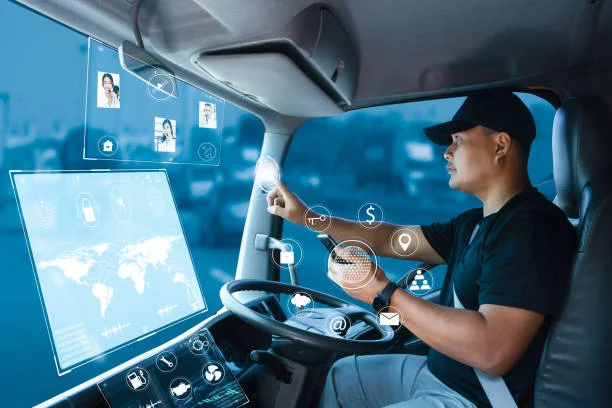How Transportation Uniforms Are Shifting Workplace Dynamics
Once used to identify staff, today’s transportation uniforms contribute to more dynamic and positive workplace cultures. These uniforms foster a corporate identity, build public trust, and reinforce a sense of pride and unity among workers. When every team member looks the part—from bus drivers to warehouse loaders—it signals professionalism, reliability, and a commitment to customer care. Employers have noted that enhancing uniform programs often leads to improved morale and collaboration; employees feel a shared purpose and a measurable boost in engagement on the job.
Organizations that adopt modern transportation uniforms see benefits beyond aesthetics. For example, recognizable uniforms help customers quickly identify staff, which can heighten safety and efficiency at transit centers or delivery stops. Research in employee retention shows teams with upgraded, comfortable uniforms enjoy higher satisfaction rates and reduced turnover, as workers are more likely to feel cared for when outfitted in attire that reflects their daily needs. As uniform design becomes more thoughtful, companies are seeing real reputation improvement and customer satisfaction.
Prioritizing Safety and Compliance in Uniform Design
Safety is a cornerstone of the transportation industry. Uniforms are designed with obvious reflective strips, weather-resistant fabrics, and flame-retardant technology to offer protection on the job. These are not just optional features—many are required by law. Agencies like the Occupational Safety and Health Administration (OSHA) have published explicit guidelines recognizing that correct attire and personal protective equipment (PPE) reduce risk exposure. Updated uniforms help prevent falls, collisions, and injuries from environmental hazards. This is vital for workers exposed to traffic, industrial machines, or unpredictable outdoor conditions.
Consider how uniforms with high-visibility features in many sectors—from city transit to long-haul shipping—help workers stand out in low-light or crowded settings. Organizations that upgrade to compliant options like Westpeak corporate uniforms frequently report significant reductions in workplace incidents, especially when paired with routine safety training. These improvements protect people and keep companies free from costly fines and liability. Investing in the latest safety-focused apparel shows a company’s ongoing dedication to employee well-being and operational excellence.
Balancing Comfort, Functionality, and Visibility
Comfort in uniforms isn’t just a luxury—it’s a necessity for the transportation workforce. Many employees spend hours behind the wheel or on their feet, often in fluctuating temperatures or changing weather. Modern transportation uniforms incorporate moisture-wicking fabrics that pull sweat away from the skin, stretch panels that allow for a greater range of movement, and adjustable elements suited to different body types. These advancements lead to less fatigue and better focus on safety-critical or task-heavy assignments.
Beyond comfort, today’s uniforms have practical features designed for everyday use. Stain-resistant materials, zippered pockets, reinforced seams, and integrated identification slots address transport personnel’s unique challenges. Meanwhile, built-in visibility enhancements, like reflective piping or color-blocked panels, help ensure that workers remain visible on busy docks or dimly lit roadways. Collectively, these refinements create uniforms that adapt to real job demands, reducing distractions and making it easier for staff to work confidently and efficiently.
Innovative Trends Fueling Uniform Innovation
Technology is rapidly driving transformation in workwear. The digital age has brought innovations such as individualized QR codes, RFID-enabled badges, and uniforms with smart textiles that monitor activity levels or temperature for safety monitoring. These factors enhance both accountability and efficiency, particularly in fast-paced logistics environments. As workplace automation grows, so does the demand for uniforms that can interface intelligently with security systems and workflow management tools.
Antimicrobial blends, covered in the digital manufacturing revolution, are gaining traction across many industries. These advances extend uniform life, reduce the spread of contaminants, and support sustainability goals. In some cases, wearables embedded in uniforms can alert workers to unsafe conditions, track health stats, or even provide navigation assistance in warehouse settings. All of this signals a shift toward data-supported, technology-integrated work attire that seamlessly adapts to the needs of a modern workforce.
Eco-Friendly Materials Making Their Mark
Sustainability has become a significant consideration for companies updating their transportation uniforms. Many now opt for eco-conscious materials such as recycled polyester, organic cotton, or fabric blends using fewer chemicals and less water. Some providers offer certifications that verify their environmental claims, helping businesses demonstrate a genuine commitment to responsible sourcing and production.
These eco-friendly uniforms reduce overall environmental impact across the garment’s lifecycle. Besides the obvious benefits to the planet, these choices can improve brand reputation and employee satisfaction, especially among younger generations with strong values around sustainability. Switching to earth-friendly materials also opens the door for circular economy programs, encouraging uniform recycling at end-of-use and reducing landfill waste while still meeting rigorous performance benchmarks.
Related insight: This article dives even deeper into the topic.
Employee Perspectives on Uniform Choice
Listening to the people who wear uniforms daily is a form of a program. Workers consistently ask for breathable, non-restrictive, easily washable options. In practice, this means including greater sizing options, allowing for seasonal layering, and selecting materials that won’t irritate the skin through repeated use.
Forward-thinking companies often run pilot programs or survey frontline staff before rolling out new uniforms. The result is more practical and personalized attire, such as cargo pants with additional tool pockets, lightweight moisture-wicking polos for summer, or insulated jackets with adjustable cuffs. Workers who feel their feedback is valued are likelier to embrace new uniforms and perform at their best. Respecting worker input helps foster a supportive, engaged workforce, making it a win-win for both sides.
Uniform Regulations and Changing Standards
Uniform standards are anything but static in the transportation sector. Legal requirements and industry best practices frequently evolve, shaped by technology updates and feedback from accident investigations. This can impact everything from minimum reflective surface requirements to the performance of protective materials in harsh climates.
To stay compliant, many organizations invest in ongoing education and regularly review their uniform policies, sometimes in close consultation with workforce representatives. Open and transparent communication ensures that standards are met not just to avoid fines, but to meet employees’ safety and comfort needs on the ground. This proactive approach positions businesses as safety and staff care leaders, helping them attract and retain top talent.
What’s Next for Transportation Uniforms?
In the next era of transportation, uniforms will fuse function and technology in unprecedented ways. Imagine uniforms that monitor vital signs and adjust their thermal properties based on temperature shifts, or that use RFID to automate check-ins and inventory tracking. Advances in textile production may yield uniforms made entirely from upcycled fibers or those that biodegrade with minimal environmental impact, making old uniforms less of a waste issue.
As digital management, automation, and environmental consciousness reshape the transit and logistics landscape, the smart uniform will become as essential as smart devices or electric fleets. Businesses poised to adopt and invest in ongoing uniform innovation will benefit from safer, more teams and stronger competition as the industry continues to evolve.
You’ll find even more guides and resources on 2A Magazine .







